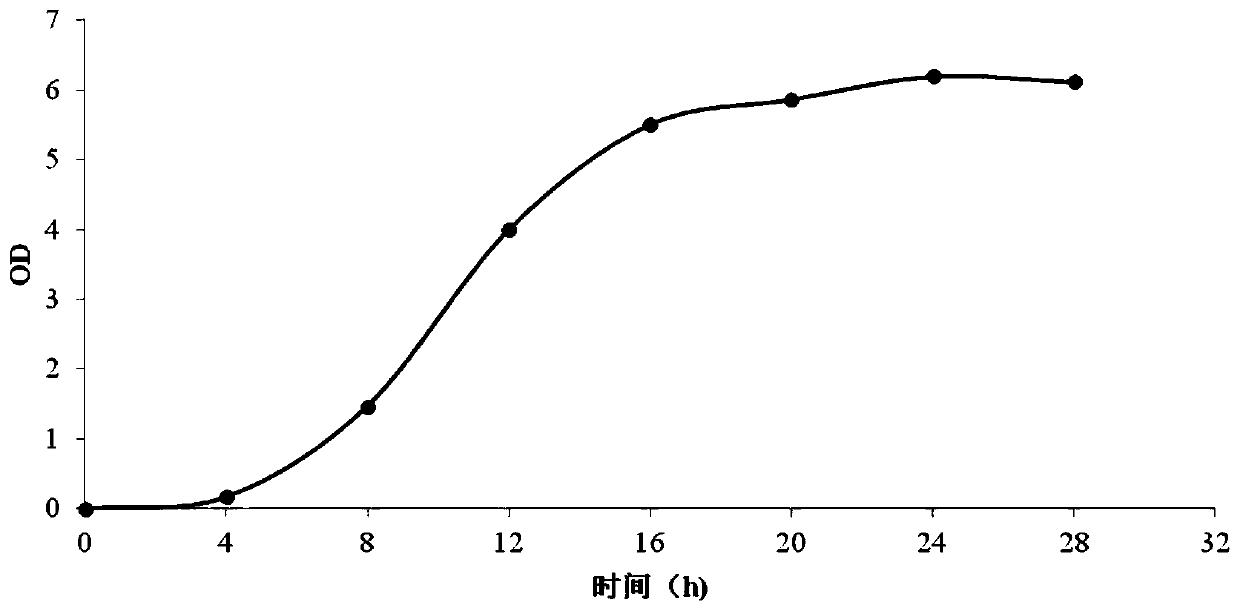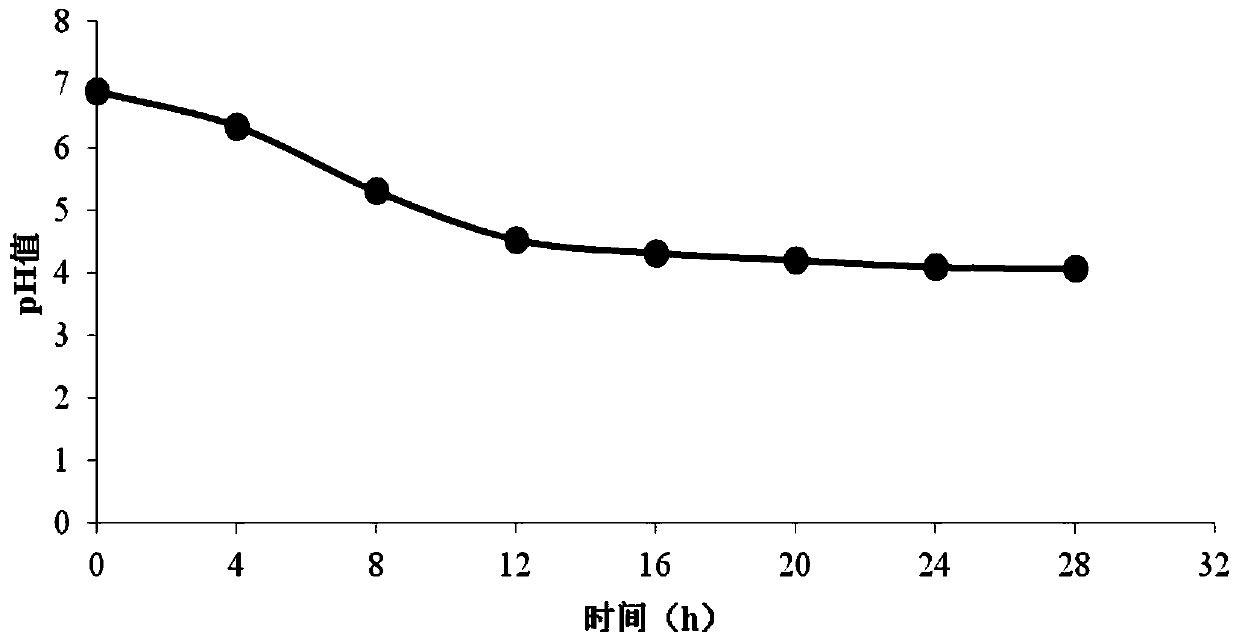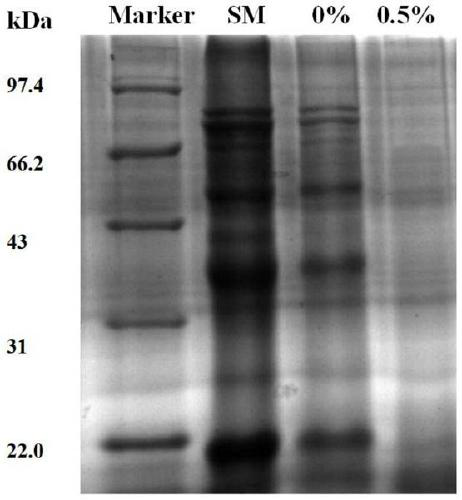A strain of Lactobacillus plantarum and its application in fermented feed
A technology of Lactobacillus plantarum and feed, applied in animal feed, animal feed, botanical equipment and methods, etc., can solve the problems of short shelf life and limited improvement of fermented feed nutritional value, and achieve extended shelf life, reduced content, Good for storage
- Summary
- Abstract
- Description
- Claims
- Application Information
AI Technical Summary
Problems solved by technology
Method used
Image
Examples
Embodiment 1
[0022] 1: In order to achieve a better separation effect, put the fermented soybean meal into the MRS liquid medium according to the inoculum amount of 10g / 100mL, culture at 30°C, 200rpm for 48h, and continuously proliferate for 2 to 3 times.
[0023] The formula of MRS medium is as follows: peptone 10.0g, beef extract 10.0g, yeast extract 5.0g, glucose 5.0g, sodium acetate 5.0g, diamine citrate 2.0g, Tween-80 1.0g, dipotassium hydrogen phosphate 2.0g, magnesium sulfate heptahydrate 0.2g, manganese sulfate heptahydrate 0.05g, calcium carbonate 20.0g, agar 20.0g, distilled water to 1.0L, pH 6.8.
[0024] 2: Separation and purification of strains: Dilute the sample step by step with sterile physiological saline, spread it on the plate of the separation medium (containing 2% calcium carbonate) that has been prepared, and cover it with a layer of the same medium again, Sandwich anaerobic culture (30°C, 48h), and then select a single colony with a large calcium-dissolving circle, s...
Embodiment 2
[0029] 1. Preparation of indicator bacteria suspension: Escherichia coli, Salmonella and Staphylococcus aureus and other pathogenic bacteria glycerol tubes were inoculated in the culture medium, cultured on a shaker at 37°C at 200r / min for 16-18 hours, and the bacterial concentration reached 1.2× 10 10 CFU / mL.
[0030] 2. Preparation of Lactobacillus suspension: Inoculate pure Lactobacillus plantarum into 100mL MRS liquid medium under sterile conditions, and culture at 37°C for 24-48 hours, and the bacterial concentration reaches 1.5×10 10 CFU / mL.
[0031] 3. Preparation of double-layer plates Take a plate with a diameter of about 90 mm, pour 18-20 mL of heated and melted nutrient agar medium into the plate, spread it evenly in the plate, place it on a horizontal platform to solidify, and use it as the bottom layer. Take another semi-solid nutrient agar medium (1% agar content) and heat it to melt in an appropriate amount, let it cool to 48-50°C, add 0.1-0.2mL of indicator b...
Embodiment 3
[0042] Refer to "Berger's Bacteria Identification Handbook" and "Lactic Acid Bacteria Classification and Identification and Experimental Methods", and perform 16sRNA sequencing on strain JUN-DY-6. Among them, the results of the physiological and biochemical experiments of the strains are shown in Table 4, and the results of the carbon source fermentation experiments are shown in Table 3, combining the results of the physiological, biochemical and carbon source fermentation experiments, and comparing the 16S information. The strain was identified as Lactobacillus plantarum according to cell microscopic morphology, physiological and biochemical data and 16S rRNA gene sequence data.
[0043] Table 3: Sugar fermentation test results of Lactobacillus plantarum JUN-DY-6.
[0044]
[0045] Note: "+" means strong fermentation, "d" means slight fermentation, "-" means no fermentation
[0046] Table 4: Physicochemical test results of Lactobacillus plantarum JUN-DY-6.
[0047]
...
PUM
| Property | Measurement | Unit |
|---|---|---|
| diameter | aaaaa | aaaaa |
Abstract
Description
Claims
Application Information
 Login to View More
Login to View More - R&D
- Intellectual Property
- Life Sciences
- Materials
- Tech Scout
- Unparalleled Data Quality
- Higher Quality Content
- 60% Fewer Hallucinations
Browse by: Latest US Patents, China's latest patents, Technical Efficacy Thesaurus, Application Domain, Technology Topic, Popular Technical Reports.
© 2025 PatSnap. All rights reserved.Legal|Privacy policy|Modern Slavery Act Transparency Statement|Sitemap|About US| Contact US: help@patsnap.com



